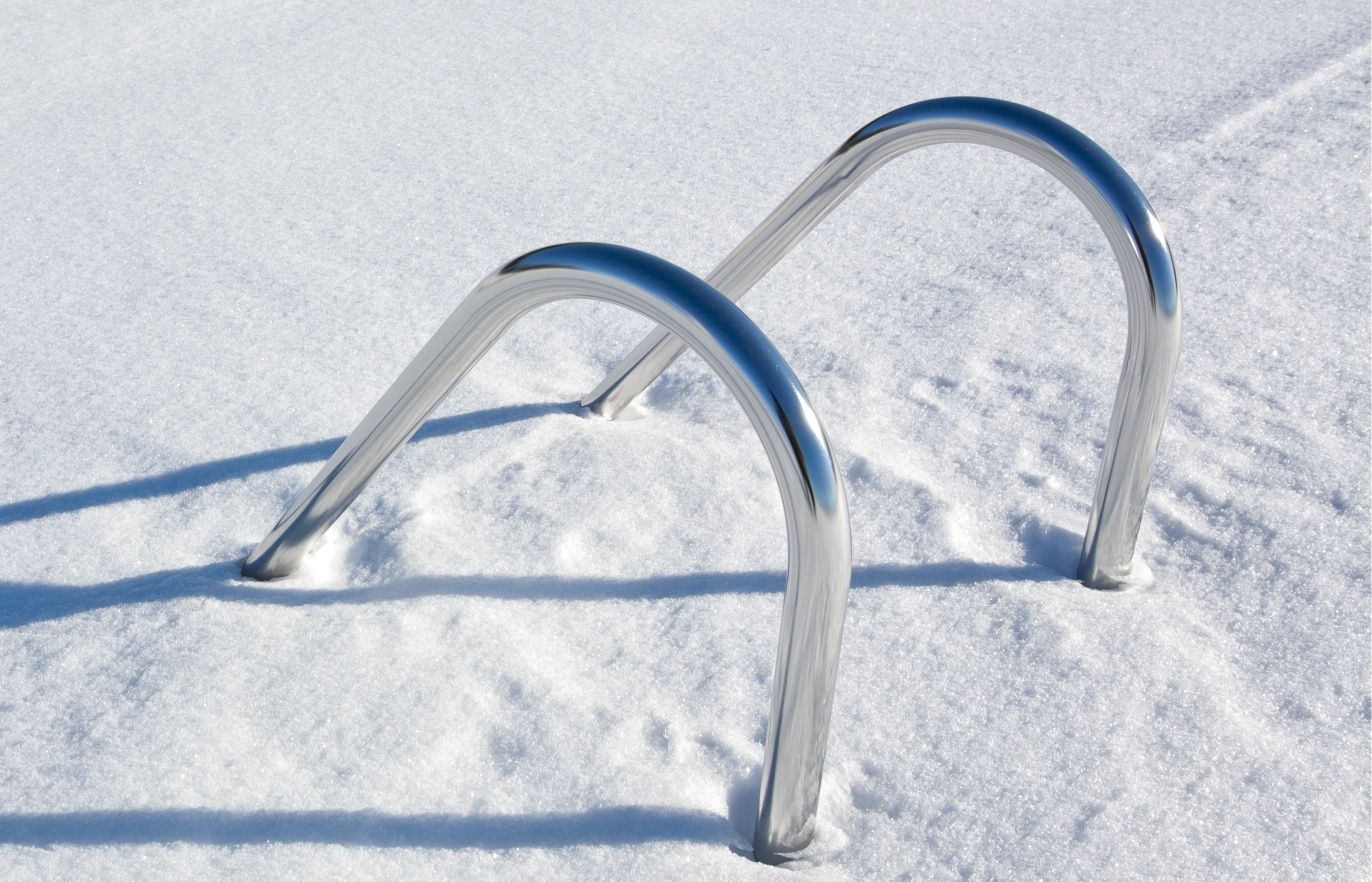
Most pool owners accept “pool season” -- the warm, comfortable time of year when the sun’s shining, temperatures are high, and your pool is at its most appealing.
If you don’t live in the tropics (or south Florida), “pool season” or swimming season typically starts when annual plants begin to bloom in the spring and winds down when leaves begin to change color and temperatures dip in the fall.
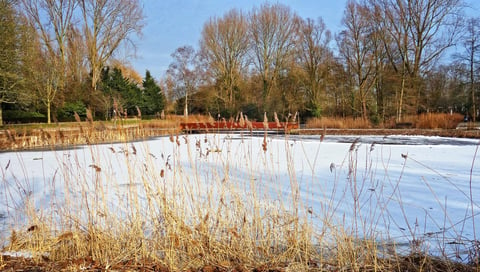
The smart, safe, and most cost-effective long-term solution to these seasonal changes is to winterize your pool, which prepares it to endure cold temperatures and inclement frosty weather without risk of damage or deterioration.
But how do you winterize a pool safely, effectively, and affordably?
This guide will walk you through the whole process, so you can be ready to wrap up your pool season and protect your pool from the cold, ice, and other unwelcome wintery impacts that might otherwise make it harder to maintain your pool for years to come.
Why should you winterize your pool?
Most components of inground swimming pools (and above-ground pools for that matter) are designed to function in warm, enjoyable weather.
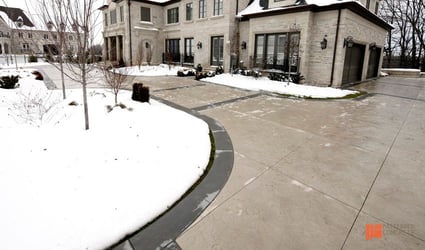
Their components -- and even the chemicals used to keep them clean -- aren’t meant to sit unused through the cold winter months, which can cause all sorts of problems if your pool water freezes.
Proper winterization prepares everything involved in using and operating your pool for these colder temperatures.
This means preparing your pool surface, the water inside, any chemicals you’ve used to keep that water clean, and all the pumps, filters, heaters, and other equipment through which water may flow.
Let’s look at each critical component you’ll need to winterize… and at the end of this article, we’ll provide you with a quick and handy checklist so you can make sure you’ve taken care of everything before it’s time to close your pool.
When should you start winterizing your pool?
The answer to this question depends heavily on where you live and what accessories you have -- for example, an outdoor pool without a heater should generally close your pool before outside temperatures drop below freezing, or 30 degrees Fahrenheit.
This means that if the temperature is below freezing at any time during the day or night, you should probably call it a season and shut things down.
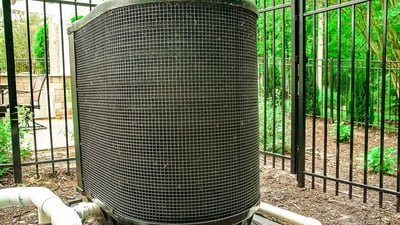
If you have a solar pool heater or electric heat pump, you should still follow these guidelines, as neither type of heater is designed to work in cold temperatures.
However, it may be possible to keep your pool open year-round with a gas or propane pool heater -- but it’s likely to cost you quite a bit in terms of fuel usage, especially if you’re trying to keep the water toasty while it’s snowing outside.
The basic steps to properly winterize a pool
First…
Remove any accessories, toys, and nonessential equipment, such as removable ladders or steps, detachable water features, and other items you won’t use for the final pre-closing cleaning process. Store them safely in a shed, indoors, or in a secure place near the pool where they won’t be damaged by the elements or by random animals.
Next…
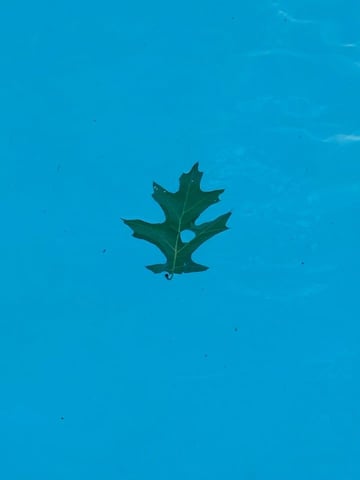
It’s time to thoroughly clean your pool water by removing any debris on the surface. Consider running your pool vacuum or pool cleaning robot now, to get rid of any remaining dirt and other junk on the pool floor.
You can also clean the bottom of your pool after the next step, but it may save time to do all your debris cleanup in one go.
It’s important to get rid of all organic debris before closing, because anything biodegradable -- leaves, tree branches, chunks of dirt, dead bugs, and so on -- can decompose and create stains on the pool surface, which you certainly don’t want to see when reopening your pool for the next swimming season.
Then…
After removing all visible debris, you should brush, shock, and sanitize your pool water thoroughly. We recommend adding 10 ounces of algaecide 60 per 10,000 gallons of pool water, and one bottle of metal remover or sequestering agent for the entire pool (or according to any usage instructions on the bottle).
Run your pool pump and filter system for a full day (24 hours) to allow the shock and sanitizing chemicals to do their work and clean every part of your pool.
Next…
After you’ve cleaned everything, drain the pool water -- for some types of pools. You may not need to drain every type of pool, and the degree of draining may vary as well. Fiberglass pools should never be completely drained. All you need to do is reduce the water level to just below the bottom of the skimmer line, which will be enough to protect vital components in your fiberglass pool. Keep reading for more info on proper fiberglass pool winterization...
We recommend using a special tool that can keep water out of the skimmer while retaining all the water in your pool. This can save you some major headaches, since we also don’t recommend draining your pool yourself -- let a pool professional help you drain off your pool water, if it’s necessary for safe winterization.
Click the button below to get in touch with a pool pro now to discuss your pool project, whether you're just getting started in the construction process or would like expert guidance on the winterization process:

Once you’ve drained your pool (and/or secured your skimmer), remove all plugs and water from the pump and filter system. This includes everything through which water may flow, including heat pumps and decorative water features as well as the primary pumps and filters.
Put all your plugs in a secure place so you can easily re-attach them when re-opening your pool next year. If there’s space with your pool toys and accessories, that would be as good a place as any to store your plugs.
Next...
Blow out your pool's plumbing lines -- typically with an air compressor -- and plug all of them. We recommend adding a “Gizzmo” to the skimmer during this step, as mentioned above. A Gizzmo is simply a long, green tube used to block off the skimmer when it’s not meant to be used. You can pick one up on Amazon for a few bucks (it's the green thing in the image to the left).
Finally...
Cover your pool and secure your cover for the winter. If you’re using a vinyl or tarp cover, use a pump in the center of the cover to remove any storm water that may accumulate.
Mistakes to avoid when winterizing your pool
We’ve written extensively about winterizing your pool in the past, and in our decades as “pool guys,” we’ve seen a few common mistakes crop up for many pool owners when they attempt to close their pool for the winter.
If you’d like to get the full scoop, read our article on 5 common winterization mistakes. If you just want the quick and simple checklist, here it is…
Clean your salt generator, if you have one. Otherwise, your salt water system may not start up so easily next spring, if it’ll start at all.
Blow out your heater lines, if you have them. Remember, the “plumbing” we told you to blow out with an air compressor earlier includes everything through which water might flow, including the lines running through your pool heater.
Clean your filter! A dirty filter can be wrecked by freezes and thaws over the winter. Keep it clean to keep it safe and functional for your next swim season.
Put a Gizzmo in the skimmer line. Remember, you can get your Gizzmo on Amazon.
Turn off any electrical components. You don’t want your pumps and filters running in the winter, especially after you’ve drained and/or blocked off your skimmer line. You won’t be using the pool, so don’t waste electricity or risk damage to any important equipment by leaving things on after you’ve done the rest of your winterization work.
Want to make the most of your fiberglass pool? Download our free eBook, with comprehensive info on construction, accessories, maintenance, and more. It's got everything you need to keep your pool healthy, enjoyable, and in top shape for decades to come. Just click below to get your eBook now:
Pool winterizing chemicals and pool winterizing kits
We’ve briefly covered the chemicals you should use to winterize your pool, but we haven’t gotten super specific about those chemicals yet.
But there’s good news!
Pool winterizing chemicals are easily found on Amazon, often as all-in-one packages with algaecide, pool shock, and other treatments. In The Swim offers kits for various pool sizes, which you can easily pick up on Amazon -- click here to check out In The Swim’s pool winterizing kits to find the right one for your size of swimming pool.
There are several other highly-rated pool winterizing kits available on Amazon. Here are a few we’ve found that have strong reviews:
- Omni Winter Care Pool Closing Kit (up to 20,000 gallons) -- 4.5 stars
- Rx Clear Winter Pool Closing Kits (10,000 - 45,000 gallons) -- 4.5 stars
- Doheny’s Ultimate Pool Winterizing Kit (up to 35,000 gallons) -- 4.7 stars
- Qualco Pool Closing Kit (up to 30,000 gallons) -- 4.5 stars
As you can see, it’s not particularly challenging to get everything you need to safely and successfully close down and winterize your pool when swim season’s over. The real challenge is finding the patience to wait out the cold temperatures until you can get back in the water again!
Any questions about winterizing and closing your pool? Ask us in the comments. We’re happy to help pool owners make the most of their pool experience!
At River Pools, we manufacture world-class fiberglass pools for customers across North America. If you're shopping around for a fiberglass pool, feel free to take a look at our catalog of models, visit our extensive video library, try out our pool cost calculator, or request custom pricing using the button below.



